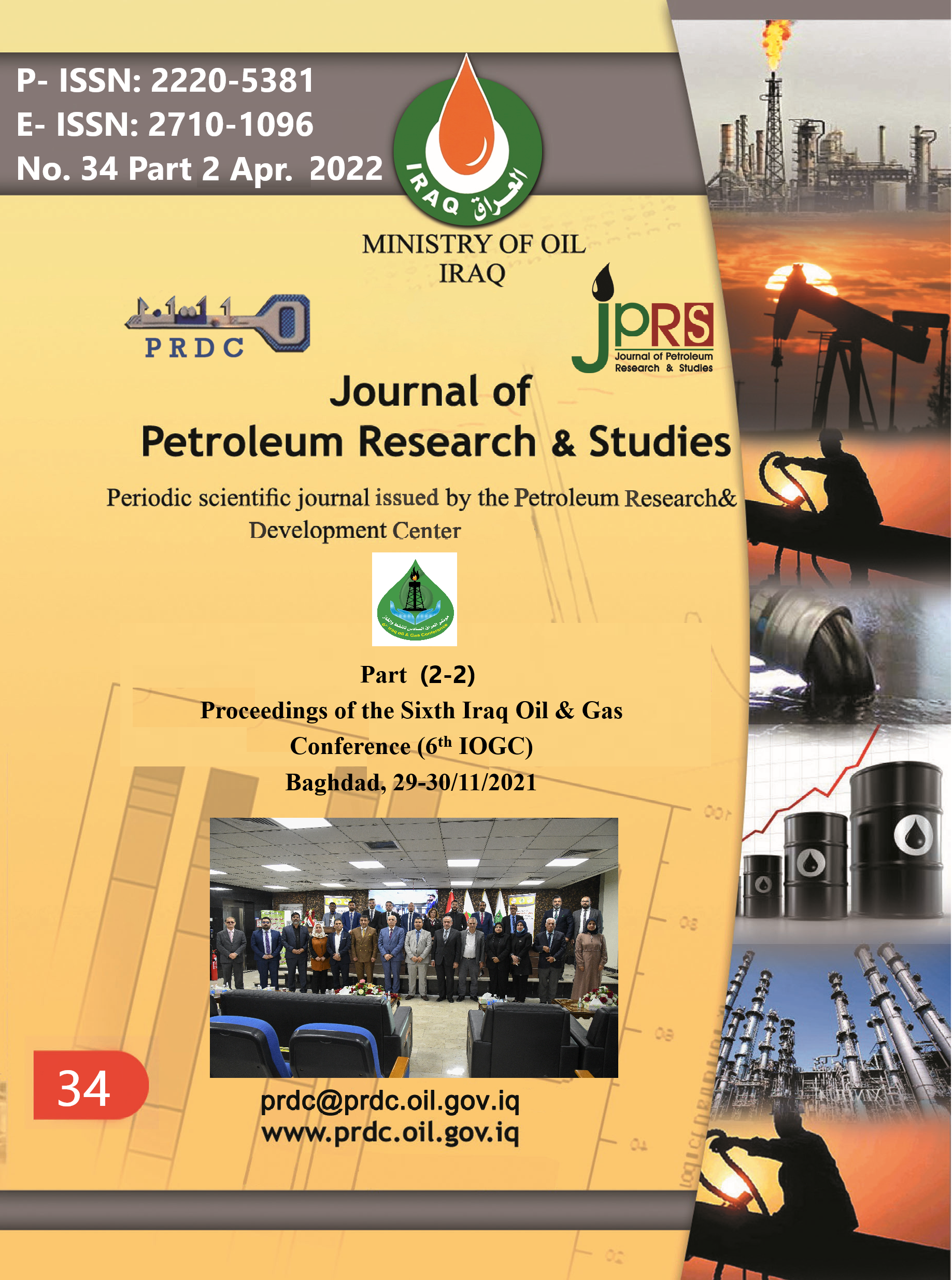Using Smart Completion Technology to Control Water Coning Problems and Increase Oil Recovery in a Southern Iraqi Oilfield
DOI:
https://doi.org/10.52716/jprs.v12i1(Suppl.).624Keywords:
Heel-toe effect, Inflow Control Device, Autonomous Inflow Control Device Inflow Control Valves.Abstract
This research describes the using of a new well completion technology system that enhance the homogeneous and heterogeneous reservoir deliverability and the production performance gained through a completion technique using Autonomous Inflow Control Valve (AICD) by self-decreasing/delaying water and gas progress and promoting increasing in oil production, therefore, equalizing the drawdown (∆P=Pi-Pwf) along the well and provide a dynamic water shut-off operation and significantly increasing the economic life of a well and therefore, reducing capital and operational expenditures for the field development.
The research presents a production performance simulation results for a conventional and smart well completion technology in a horizontal well in a southern Iraqi oilfield for two stages during well life; early stage (till 2018) and late stage (till 2033). For early stage of well life, there was no significant difference in results when comparing between the conventional completion design and the smart completion design. In the contrast, the simulation results for the late life of the well showed that the well can produce for approximately 1056.7 barrel per day crude oil with a water-cut of 82 % at the year of 2033. The also revealed that the results showed that the cumulative oil production from the year of 2018 till 2050 will be 23 million barrel of crude oil and 44 million barrel of water when the well is completed with conventional completion design. When the completion design has been changed and equipped with autonomous inflow control devices (AICDs) technology and simulated the production performance by NETool Software. The simulation results showed that the oil production has been increased by 891 barrel per day (1947.3 barrel per day) and the water cut has reduced significantly in comparison with the conventional production completion by 17 % (65.4 %) at the year of 2033. The results revealed that the cumulative oil production from the year of 2018 till 2050 will be 31 million barrel of crude oil and 33 million barrel of water.
It has been concluded, from the reservoir and production simulation, that the application of the technology is successful and showed a clear advantage of using Autonomous Inflow Control Device (AICD) that provides better water influx control profile.
References
Al Harrasi, A., Gokmen, M., Abri, I., AL-Jumah, A., Harthy, K., Busaidi, H., & Al-Joumaa, J., “More Oil and Less: Autonomous Inflow Control Devices AICD in New and Old Producers in Heavy Oil Fields from South of Oman”. In Abu Dhabi International Petroleum Exhibition & Conference. OnePetro, (2020, November).
Al-Khelaiwi, F.T., Birchenko, V.M., Konopczynski, M.R. and Davies, D.R, Advanced Wells: A Comprehensive Approach to the Selection Between Passive and Active Inflow-Control Completion, SPE 132976, 2010.
Drakely, B.K., Douglas, N.I., Haugen, K.E. and Willmann, E, Application of Reliability Analysis Techniques to Intelligent Wells, OTC 13028, 2001.
Gimre, J., Efficiency of ICV/ICD systems (Master’s thesis, University of Stavanger, Norway), 2012.
Konopczynski, M. and Ajayi, A., Control of Multiple Zone Intelligent Well to Meet Production-Optimization Requirements, SPS 109629, 2007.
Kumar, M., Sharma, P., Gupta, D. k., & Joshi, V., “Application of Inflow Control Devices in Horizontal Well in Bottom Water Drive Reservoir using Reservoir Simulation”, International Journal of Engineering Research & Technology, Volume 04, Issue 04 (April 2015).
Mathiesen, V., Aakre, H., Werswich, B and Elseth, G., The Autonomous RCP Valve – New Technology for Inflow Control In Horizontal Wells, SPE 145737, 2011.
Moen, T. and Asheim, H, Inflow Control Device and Near-Wellbore Interaction, SPE 112471, 2008.
Quyang, L., Huang, W. and Dickerson, R., Efficient Cost Saving Through an Appropriate Completion Design, SPE 100413, 2006.
Downloads
Published
How to Cite
Issue
Section
License
Copyright (c) 2022 Maitham Mezher Razaq, Ansaf Fadhi Hassan, Alameer Abdulkareem Radhi

This work is licensed under a Creative Commons Attribution 4.0 International License.














